
The capital and by far the largest city in Tajikistan, Dushanbe accounts for one fifth of the country’s GDP and one tenth of its population. While the Tajik Capital has no lack of unmissable places to explore, its bustling bazaars provide a deep and authentic glimpse into its cultural heritage. The city’s newly built Mehrgon Market might seem too sterile at first, yet it best reflects the former soviet republic’s quest for a new national identity.
Following Dushanbe municipal authority’s decision in 2010 to close the then popular Barakat Market in favor of a brand-new opera building, another marketplace had to be constructed for the now orphaned vendors. Completed in 2014 at the northeastern outskirts of Dushanbe’s downtown, Mehrgon Market (Бозори Меҳргон) was designated as the new home for merchants from the former Barakat Market and other bazaars which the city deemed as obsolete.
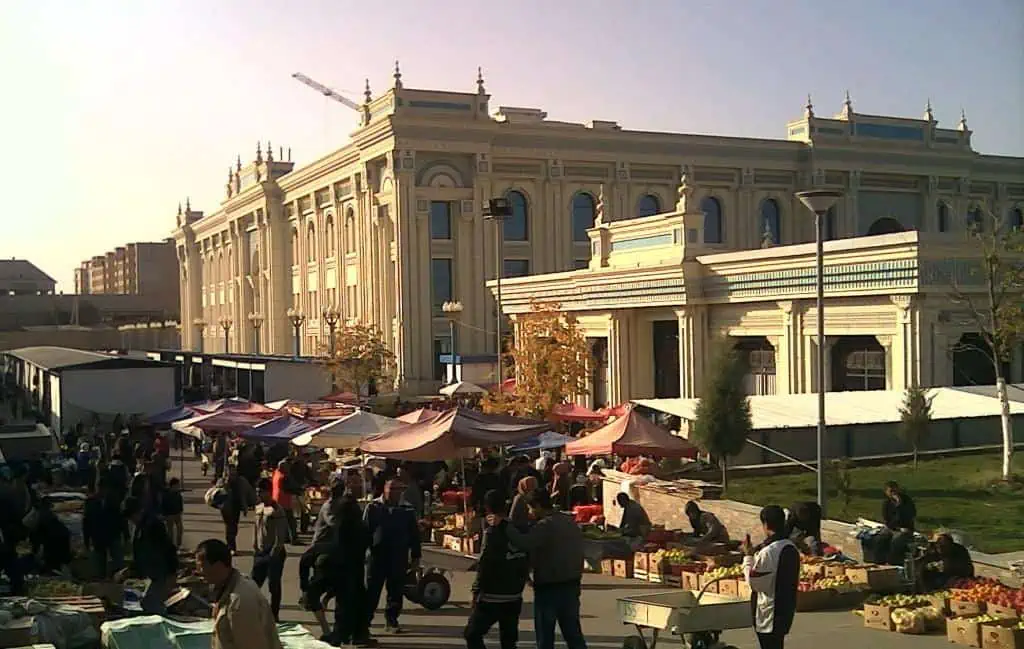
The market building alongside the makeshift outdoor bazaar
photography by: Шухрат Саъдиев/ Wikimedia Commons
Spanning over 10,000 square meters and 3 stories, the lavish shopping complex is far more reminiscent of a palace than a typical gritty bazaar. With ornamented cornices, grand arches and multiple Islamic style references, the modern bazaar is largely inspired by the famed silk-road architecture. While officially, the building’s purpose was to serve as the capital’s main market, in the eyes of the Tajik government, it is also an architectural achievement that lifted the nascent country’s national pride.
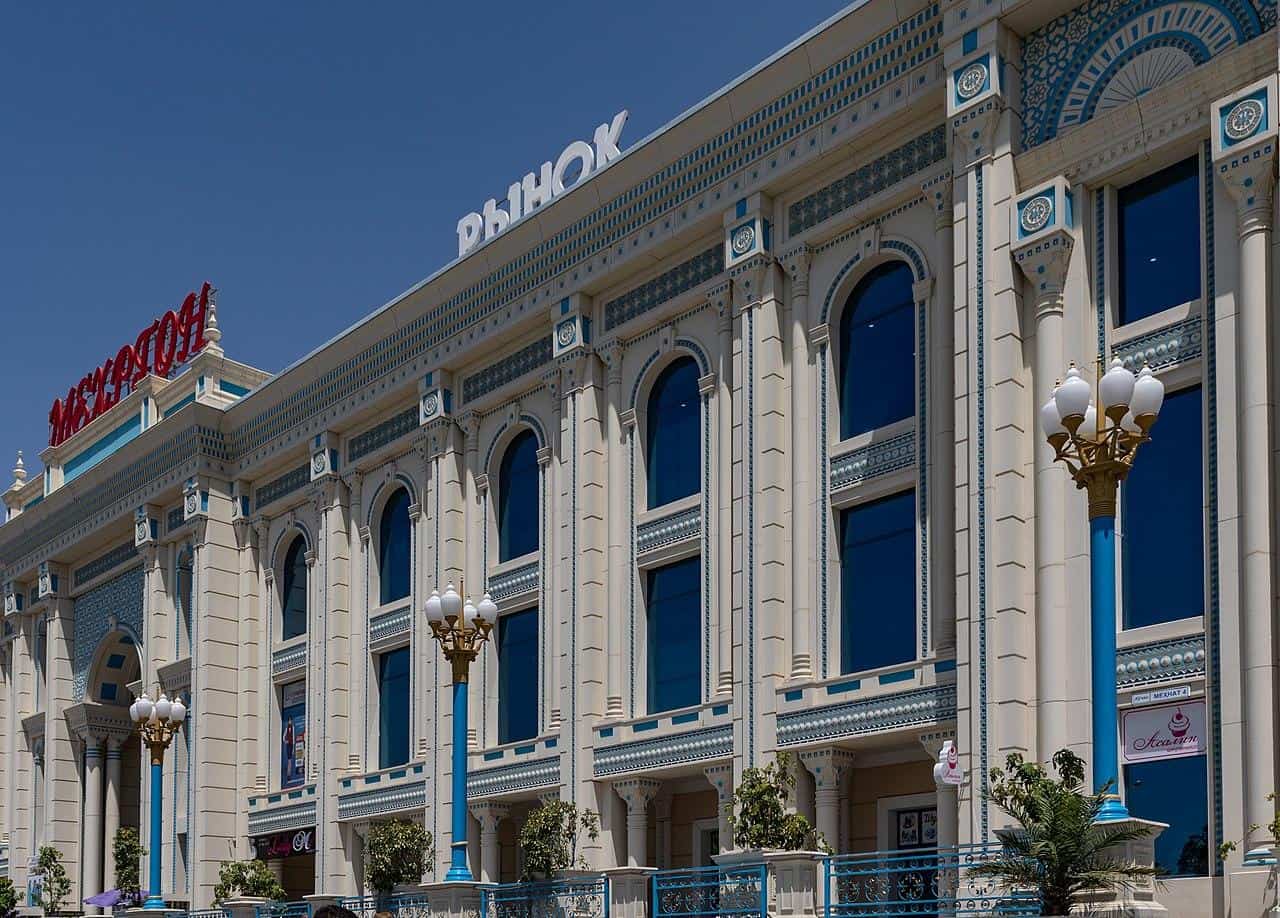
The market’s main façade
photography by: Ninara/ Wikimedia Commons
As it turns out, the market’s interior is as impressive as its façade, with a tall open space lit by a pyramid shaped skylight. Stalls are arranged around giant columns, whereas small shop inhabit the outer parts.
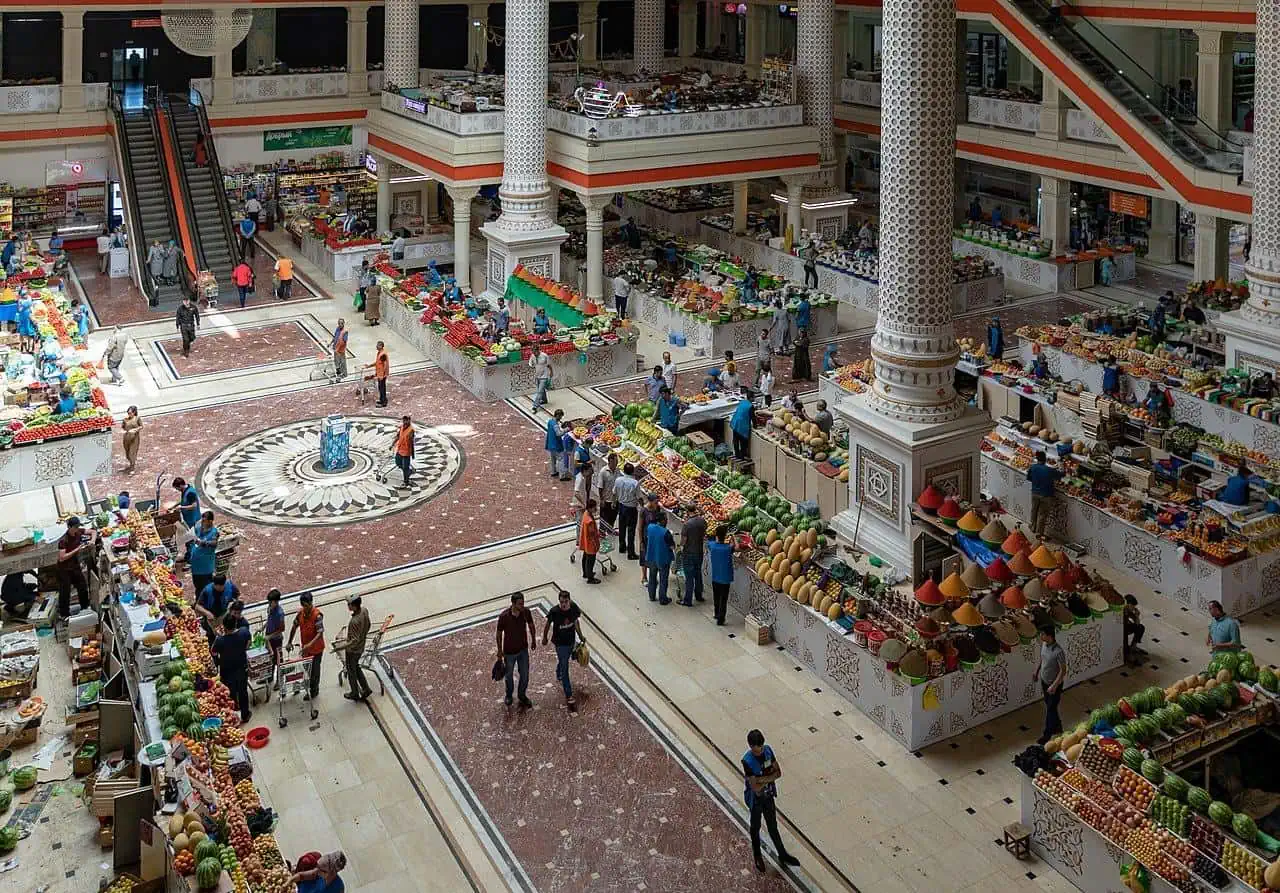
The main hall of Mehrgon Market
photography by: Ninara/ Wikimedia Commons
Mehrgon is first and foremost a food market and as such, offers a plethora of agricultural produce alongside traditional Central-Asian delicacies, including mouthwatering fruits and vegetables, spices, bread, locally made cheese, meat and poultry, rural honey and perhaps most notably, a mind-boggling assortment of scrumptious dried fruits and nuts. Additionally, at the morning hours, home-made Tajik Plov (a rice dish with vegetables and meat), otherwise known as the national dish, is available at the morning hours.
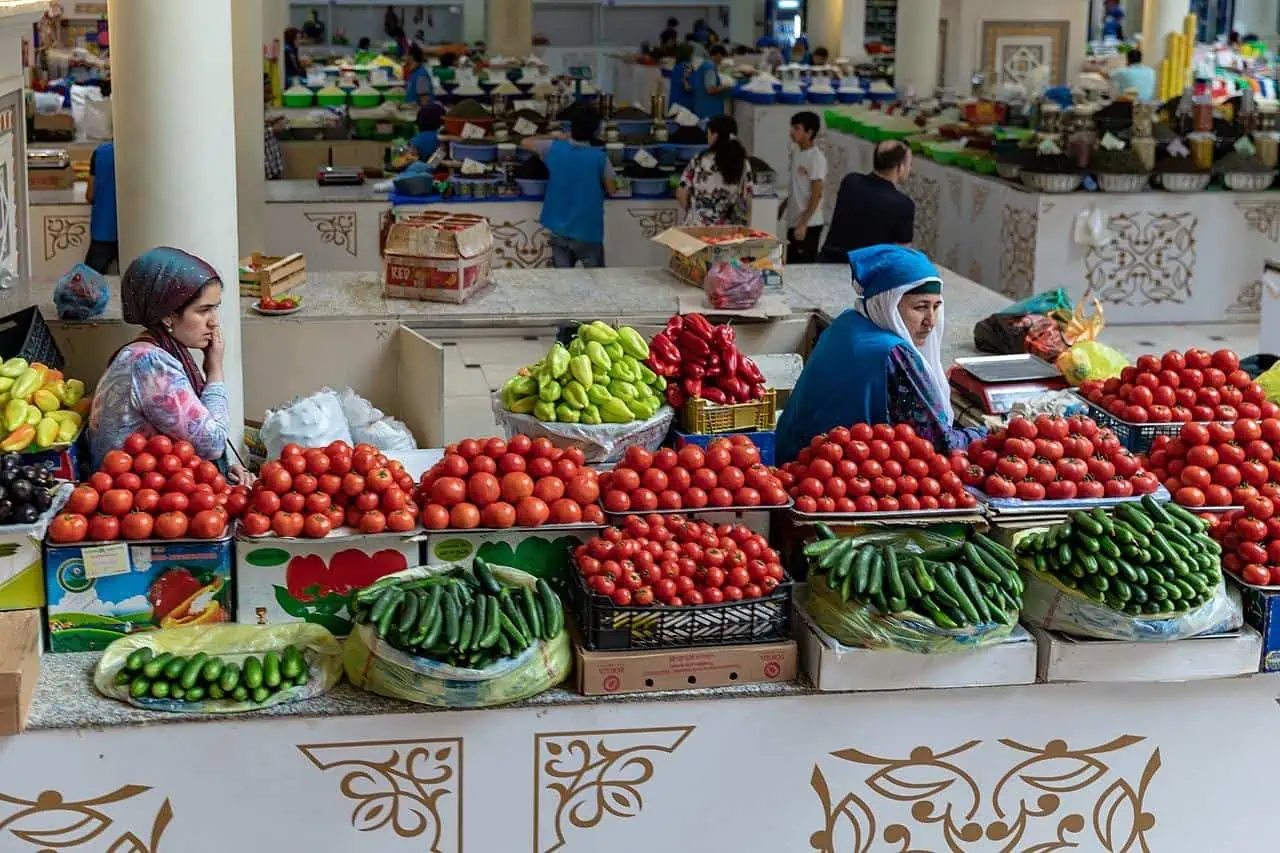
A vegetable stall
photography by: Ninara/ Wikimedia Commons
During the Soviet era, people of different ethnic backgrounds were forced to relocate to other geographical areas across the union, making the Central Asian republics far more diverse than one initially assumes. One of the vestiges of this Soviet notorious policy is a large presence of Uzbek merchants in the market, many of whom offer their country’s renowned plethora of dried fruits, almonds and walnuts.
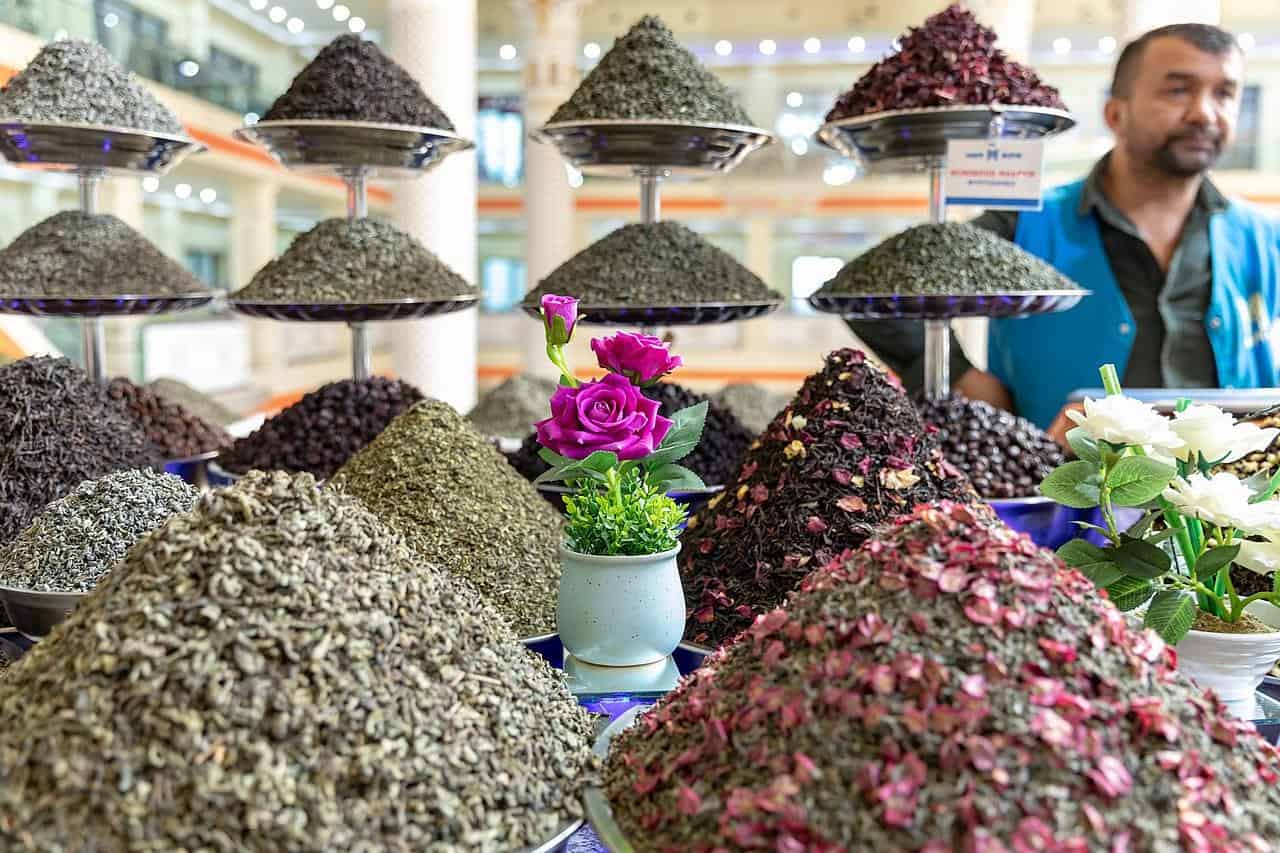
The market’s ample tea section
photography by: Ninara/ Wikimedia Commons
Though it is difficult to tell by simply looking around, Mehrgon literally showcases the entire country, as different types of products in the market originate from all over Tajikistan. Apples and other sorts of fruits arrive from the country’s Garm region, the city of Tursunzade is where the rice comes from, whilst some of the dried fruits are transported all the way from the northern regions.
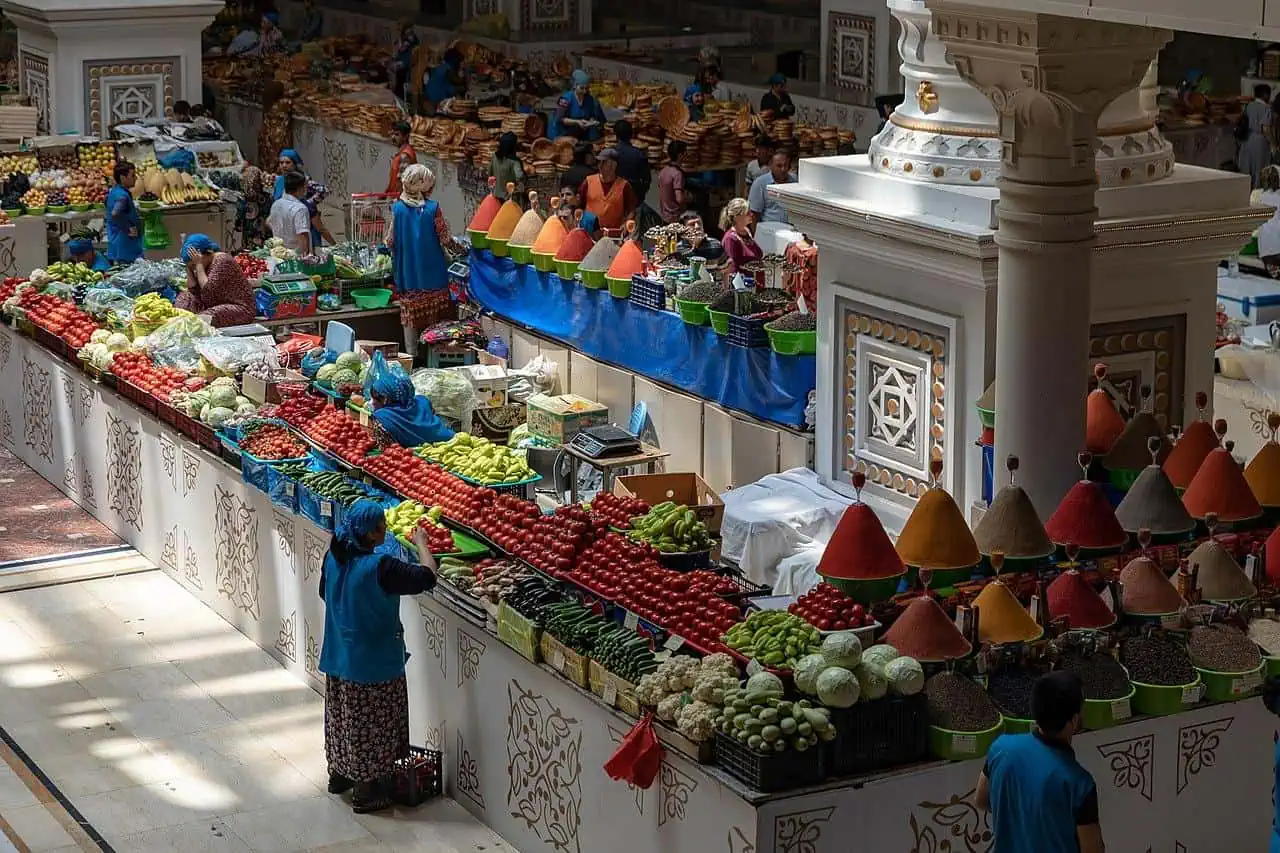
Various stalls centered around a giant column
photography by: Ninara/ Wikimedia Commons
In local terms, the market’s construction price tag of a whopping 40 million USD is immense, and so, rentals in the premises had to reflect the initial cost of the building. The higher-than-average rentals in turn forced many vendors to raise prices far beyond the reach of most Tajiks, making Mehrgon less crowded, as if it was a museum for traditional food rather than a bustling marketplace.
Nevertheless, before you decide to skip the market after questioning its authenticity, Mehrgon’s surrounding streets are home to hundreds of makeshift stalls that offer a completely different type of shopping experience. In sheer contrast to the modern market’s clean and somewhat peaceful vibes, the alternative outdoor shopping labyrinth is as hectic and chaotic as a typical Central Asian bazaar can be. With construction materials, household appliances and kitchen utensils to name a few, it also provides some much-needed items that you won’t find in Mehrgon itself.
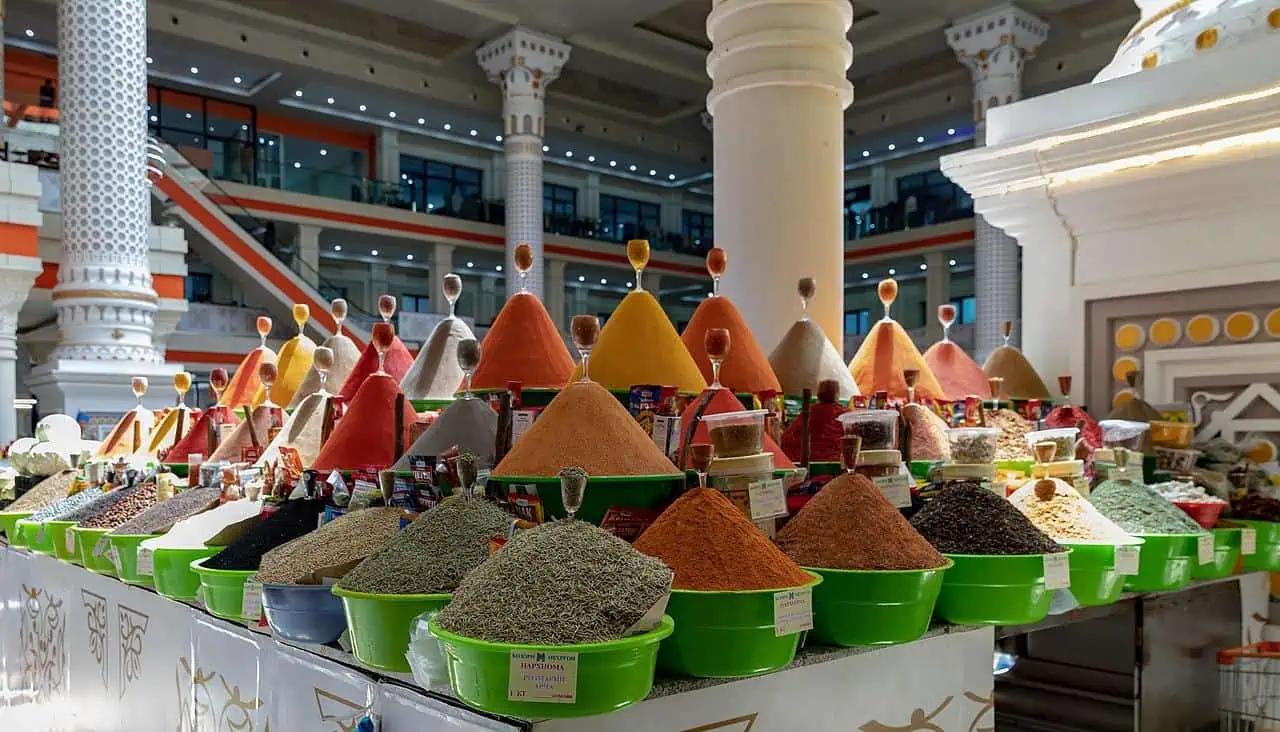
A colorful spice stall
photography by: Ninara/ Wikimedia Commons
Besides its obvious function as a central market, the building’s second and third floors are occupied by clothing stores, hair salons as well as various offices of communication and financial services.

The market’s impressive expansive space with its three floors along the perimeter
photography by: Шухрат Саъдиев/ Wikimedia Commons